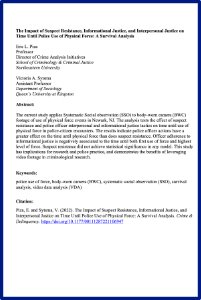By Erica Wennberg, Sarah B. Windle, Kristian B. Filion, Brett D. Thombs; et al.
As more countries legalize recreational cannabis, roadside screening programs are imperative to detect and deter driving under the influence of cannabis. This systematic review evaluated roadside screening tests for cannabis use. We searched six databases (inception-March 2020) and grey literature sources for primary studies evaluating test characteristics of roadside screening tests for cannabis use compared to laboratory tests for cannabinoids in blood or oral fluid. The synthesis was focused on sensitivity and specificity of delta-9-tetrahydrocannabinol (THC) detection. 101 studies were included. Oral fluid tests were higher in specificity and lower in sensitivity compared to urine tests when evaluated against blood laboratory tests. Oral fluid tests were higher in sensitivity and similar in specificity compared to observational tests when evaluated against blood and oral fluid laboratory tests. Sensitivity was variable among oral fluid tests; two instrumented immunoassays (Draeger DrugTest 5000 [5 ng/mL THC cut-off] and Alere DDS 2 Mobile Test System) appeared to perform best, but definitive conclusions could not be drawn due to imprecise estimates. Specificities were similar. Overall, oral fluid tests showed the most promise for use in roadside screening for blood THC levels over legal limits; their continued development and testing are warranted. Urine tests are generally inadvisable, and observational tests require sensitivity improvements.
Heliyon, Volume 9, article id. e14630. 2023.





















